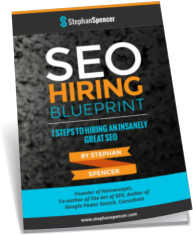Granted, RSS technology lacks the ease of use when compared to email. It’s not that straightforward for the uninitiated to subscribe to and follow RSS feeds. It’s hard enough explaining to an RSS newbie what an RSS feed is, let alone walking him/her through the installation and use of a newsreader program or a web-based aggregator.
And there are other problems too. “There’s the issue of recipient identity,” said Neil Squillante, president of Landing Page Interactive at the MarketingProfs’ Thought Leaders Summit on email marketing. “Currently most RSS feeds are just one feed for everyone to use, which means you lack the identity of email. Whereas with an email list of, say, 10,000 people, each email goes to just one person, and you can feel pretty confident that you have 10,000 people on your list.”
Rok Hrastnik, owner of MarketingStudies.net and author of Unleashing the Marketing and Publishing Power of RSS highlighted ways within RSS to create a unique, trackable URL per subscriber, which do not have to be through HTTP authentication. There are also certain solutions in the market now that generally feed per user and even allow for data capture, e.g. the user can now register and receive a unique URL.
“One of the problems, however, is that if a user incorporates that into Bloglines and shares it with the world, you may have a situation where that one unique URL is actually being subscribed to by a bunch of people,” says Rok. “That’s one situation where HTTP authentication can help, because that usually limits that particular feed to just one person.”
Rok also added that email and RSS are often appropriate for different content types. “For instance, email is the top channel for delivery, whereas RSS is more useful for high-frequency content updates. It’s not only about getting your content delivered to end users, but about improving your online visibility, search engine rankings, driving new traffic through RSS search engine directories, syndicating your content on other web media and so on.”
All good points. And in my view none of these are reasons to avoid or delay publishing your content via RSS. If you’re not already offering RSS feeds, get on the stick! RSS augments your existing email and web marketing. It’s a distinct channel that complements the email channel rather than cannibalizes it. And it’s a channel that a non-negligible percentage of Internet users have come to love.
I’ll be speaking on the topic of RSS at the New Communications Forum early next month, on a panel titled RSS as an Advertising Platform. Should be interesting. Hope to see you there!

 SIGN UP FOR EXCLUSIVE WEEKLY CONTENT
SIGN UP FOR EXCLUSIVE WEEKLY CONTENT 


I believe our newly developed press release writing software fits this bill perfectly, especially for writing press release. Just as Stephan mentioned, nothing should stop you starting your RSS, especially with the many tools out there and an increasing number of feed users.